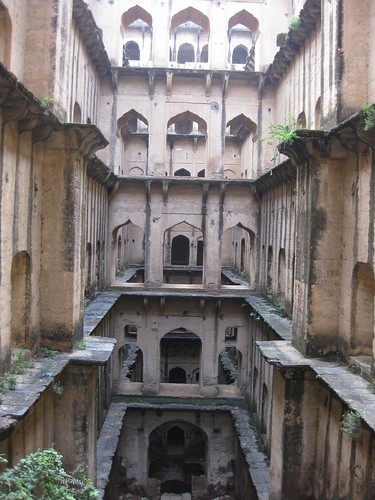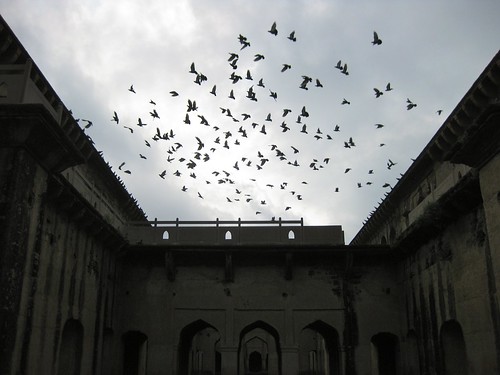On our first day at Neemrana, Tony went for a hike while I enjoyed a foot massage at the spa. He was soon joined by a jewelry vendor, who journeyed with him to the nearby stepwell, known locally as the “baoli.”
The next morning, we rose early so Tony could show me his impressive find. I expected to see a very deep yawn-inspiring water source, not unlike those I encountered as the ag reporter for a small Kansas newspaper years ago. Turns out, this baoli is older than America and way way way cooler than any Kansas farmer’s well.
I spent a lot of time trying to find accurate historical information online, but I mostly encountered the musings of other travelers, and the “facts” often contradicted each other. This blurb is from the website of Mosaic Architecture and Restoration, which posted in 2005 that it was restoring the stepwell. I cleaned it up a bit and added some English parentheticals.
Built in the 1760s it is a 9-storey underground structure of majestic scale. It was built by the Rajas of Neemrana for famine relief. Traditionally baolis in Rajasthan have acted as sarai (rest stops) for the travelers. The baoli has been neglected for decades. Now under the Rural Tourism project of the Union Government, this structure is being converted into a Crafts Haat (bazaar). The project involves restoring many roofs, re-doing the brackets, flooring, plastering and ensuring security through metal gates and katheras (stone parapets). The steps – about 200 in number – will also be re-laid.
We were there on a Sunday, so if there is, in fact, a restoration project or a craft bazaar, the workers and/or vendors must have taken the day off.
This is a WELL. Can you imagine? It’s like an upside-down apartment building.
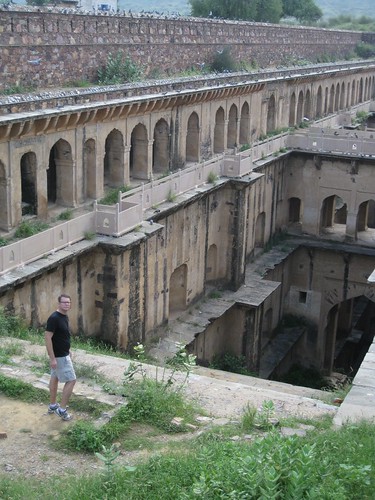
This area would have been where the Spice Road travelers tied up their animals, found some shade, traded goods, and caught a few z’s.

I reached over the railing to try to get a shot all the way down, but I was too chicken to make a serious effort.
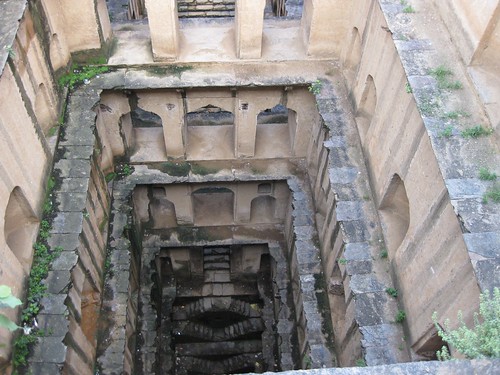
The steps going down into the well were worn and treacherous.
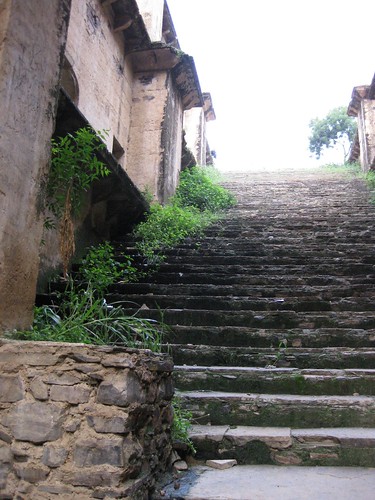
Tony waited at the top while I traipsed down a few storeys.
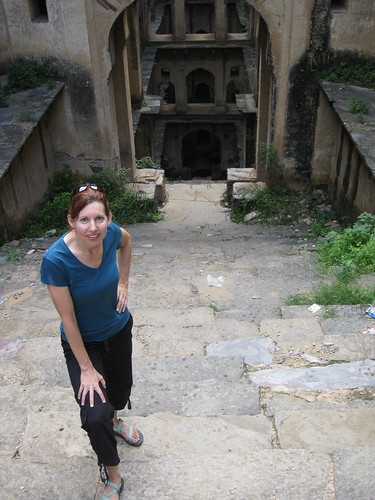
The baoli echoed with the droning coo of pigeons and squawks of Alexandrine parakeets. Here, Tony spooks some of them.
Our hike to and from the baoli was an adventure in itself. Located just one kilometer from the fort, as the crow flies, the baoli wasn’t as easy to find as you would think. When Tony visited it with the jeweler, they walked from the fort to the main road and on to the well. But we decided to take the scenic route on a dirt road that wound through farmland and the nearby village.
As we left the fort, these donkeys joined us.
We followed the donkeys on a trail, nodding at brightly clad ladies coming down from the mountain with firewood piled on their heads and backs, passing a murky pond where a wild boar and her piglets scurried about, making way for men in traditional white kurtas leading hump-backed cows, gawking at the women and young girls collecting water and balancing the massive urns on their heads, and trying not to stare into the courtyards of small homes, where families were waking up and going through their morning rituals.
Although we received some curious stares (and we think at least one rude comment from a group of bored young men), the villagers mostly smiled and called out “hello” or returned our “namaste.” One man came out from his courtyard and shook our hands. “Welcome to my India,” he said and then struggled in frustration for his next phrase. “Nice to meet you,” I said, and his face brightened with recognition. “Yes! Nice to meet you,” he parroted.
We passed one muddy courtyard, where small children were using buckets to wash several enormous water buffalo. When they saw us, they jumped up and down, waving and shouting, “Hello!” Other youngsters passed us in the alleys with big grins and cheerful greetings. Nobody asked us for money or otherwise hassled us. The village’s welcome wagon seemed genuine and heartfelt.

